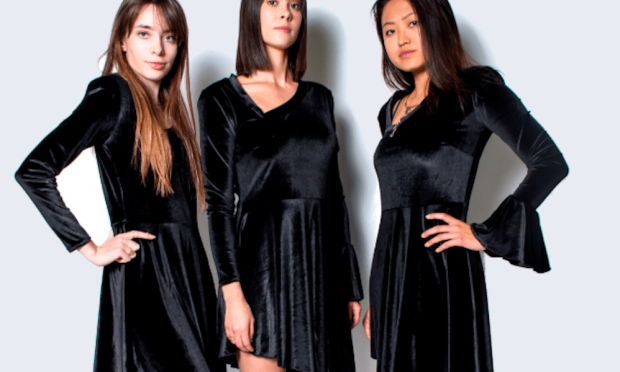Perfecting Fashion Classics With Advanced AI

Since it was first rolled out to the world in the 1920s by Coco Chanel, the little black dress has been something of an iconic fashion staple for women. Over the years many things have won the title of “the next little black dress” but nothing else has gone the nearly 100-year distance that it has. And while various designers have put their spin on the iconic look over the years, there are some fairly hard and fast limitation to how much innovating anyone can do with it. No matter what, it has to be little, black and a dress.
But for MIT grads Pinar Yanardag and Emily Salvador there was a creative horizon the little black dress had yet to cross in terms of innovation when it came to design, and a question to answer: Could artificial intelligence design a better little black dress?
The company they founded to answer that question is Glitch — a clothing firm that uses artificial intelligence (AI) to design women’s fashion pieces. The little black dress, according to Yanardag, seemed like the most natural starting place.
“The ‘little black dress’ is considered an essential item that should be in any woman’s wardrobe,” Yanardag told Vice. “Sooner or later, AI is going to be an essential tool for any person in computing, so we thought the ‘little black dress’ was a good place to start.”
The dress available for purchase on Glitch’s website — and the asymmetric (or AI-symmetric), drapey design indicates the AI’s taste runs a bit closer to Morticia Adams than Holly Golightly when it comes to styling. Other than the unique look, the dress is also uniquely available for purchase at present (the rest of the designs offered by Glitch are currently marked as waiting listed) and supports a good cause.
Glitch is giving away 50 percent of the revenue on its version of the little black dress in the form of a donation to AnitaB.org, an organization that supports women entering STEM fields. It is a good cause that has also been a powerful marketing tool for the brand — as most of their early sales have actually be to women tech workers looking to make a “powerful statement about your affinity for tech, or your interest in AI and computation.”
And the AI process that generates the Glitch fashion line is a fairly slick and creative application. The type of AI Glitch leverages is called a Generative Adversarial Network, or GAN. A GAN works by taking two AIs (or neural networks) and setting them against each other with a rule-governed task. In Glitch’s case, that task is to design fashion items.
That involves two neural nets pitted against each other to create realistic examples of something — in this case, dresses — to the point that the neural net can’t tell them apart from human-made designs. As the two neural networks “learn” from each other’s designs, they improve their own. The machines go back and forth, iterating and learning from each other’s design until they produce something that is acceptably indistinguishable from a human-designed concept.
The method is not without challenges, starting with the computing requirements necessary to do this kind of AI-based design work. Without very powerful computing underlying the whole process, Yanardag noted, building a GAN system is almost impossible. That means these tools can be very useful — but not quite in their current form.
“We are trying to democratize the usage of these AI systems for the public by releasing these tools,” said Yanardag. “If you don’t have these high-end CPUs it is very difficult to actually create these systems. We think in the near future this tech will be much cheaper and more accessible, but right now that isn’t the case.”
Because the goal of this kind of tool isn’t actually to take the human being out of the design process, she said — because that’s not a realistic goal or even a terribly sensible one. The human creative touch is obviously a major part of fashion, and not one that technology is every really going to wholly and completely displace.
But Glitch’s systems and design process do create an interesting window into a different type of creative process, and a different way of generating data about consumer design preferences. Humans can still interact with — and even iterate from — their AI guided system. The technology at base can open a new starting point for human creative efforts.
As she put it, “At the end of the day, these tools are more about empowering human designers, than about turning AI into the sole designer for humans.”
